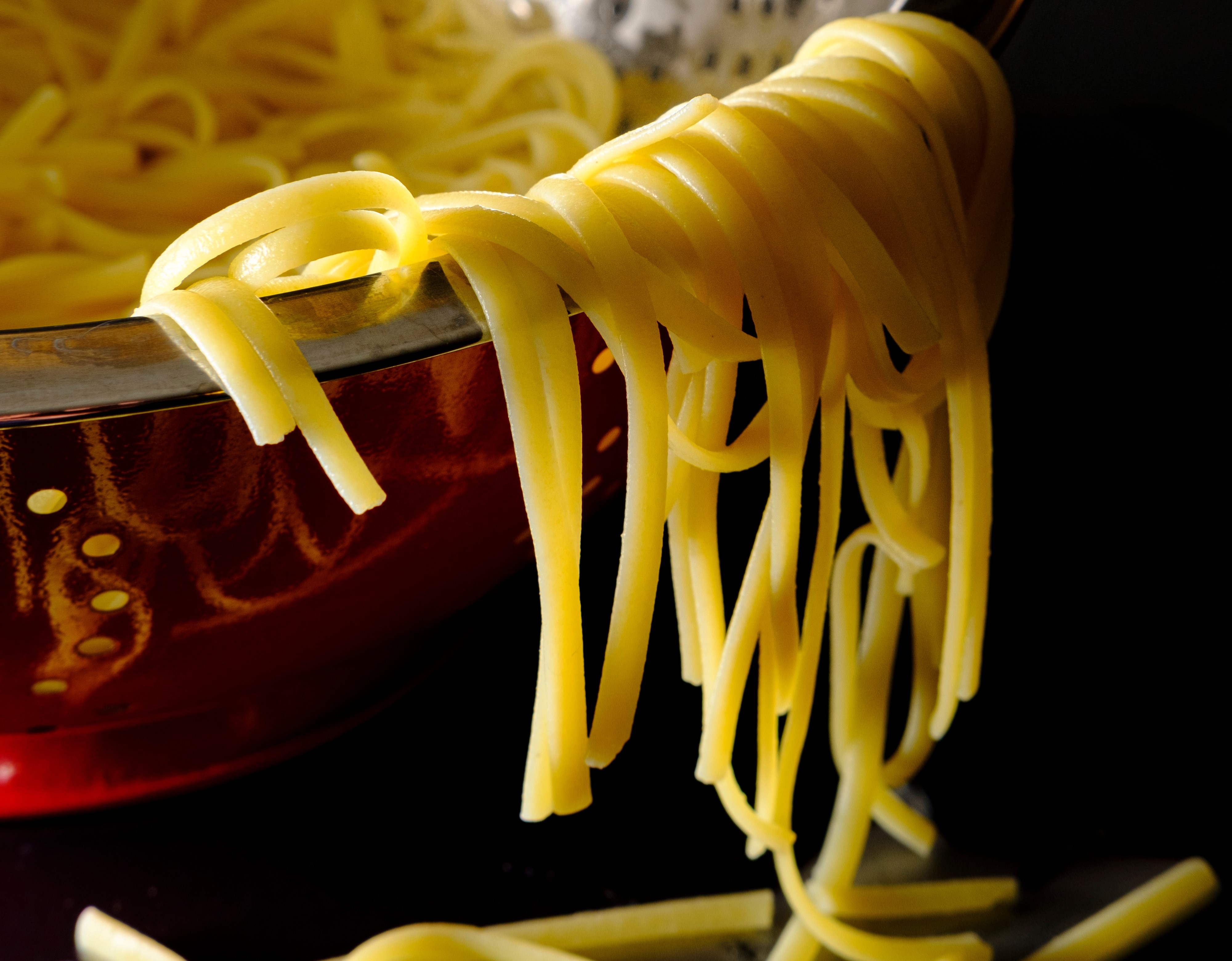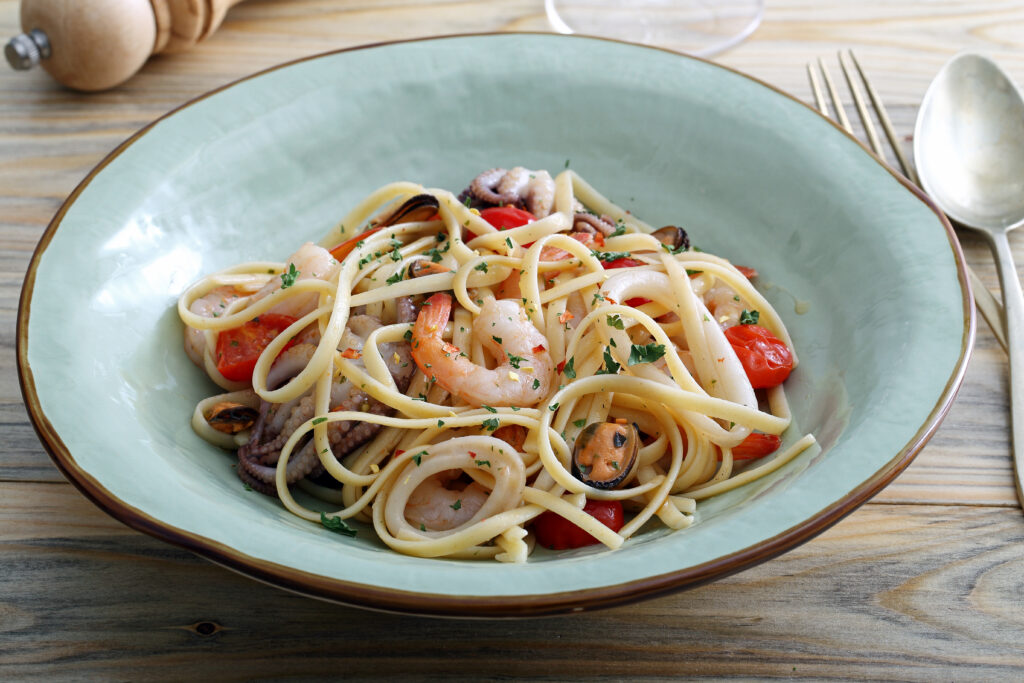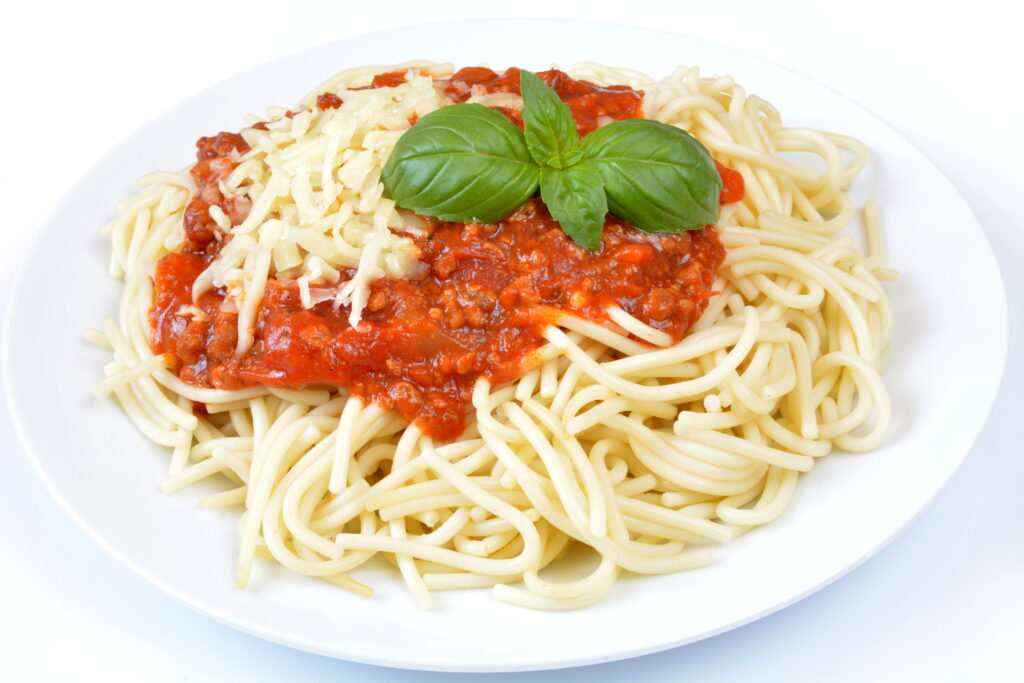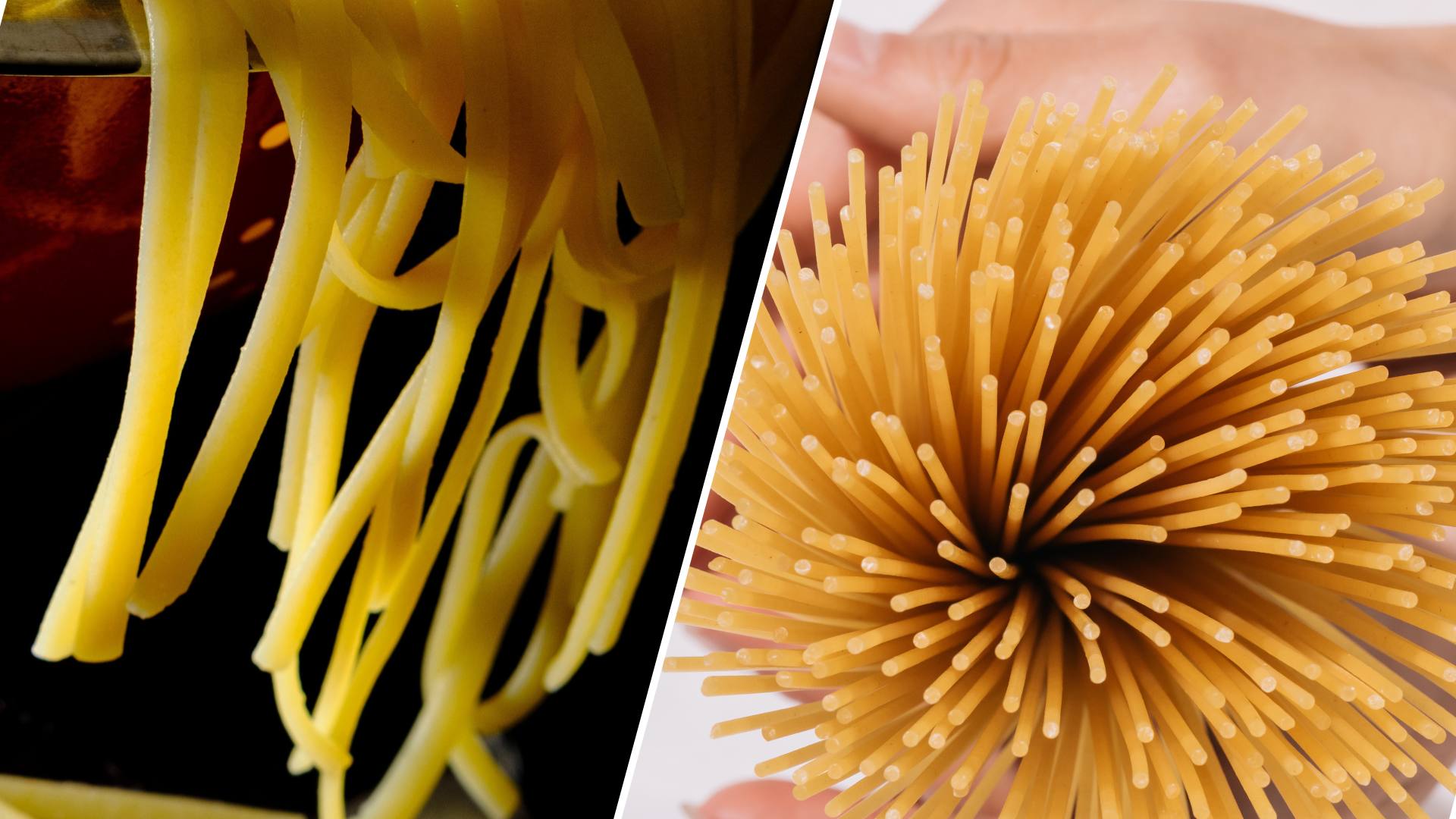Some of the links on this page are affiliate links, which means that Buzzy Kitchen earns commission from purchases made – at absolutely no extra cost to you. Thank you so much for supporting Buzzy Kitchen!
They look the same, can be used in the same recipes, and have the same ingredients. but are linguine and spaghetti the same? We’re going to take a deep dive to find out what the differences really are, and what will happen if you substitute one for the other.
Let’s get right to it, shall we?
What is Linguine?
Linguine looks somewhat similar to spaghetti, and it is sometimes referred to as “flat spaghetti.” When you take a closer look, you’ll see that the noodles are flat rather than cylindrical, which spaghetti is. It is a long noodle type just like spaghetti and is usually between 8 and 9 millimetres wide.

The usual ingredients to make this type of pasta include wheat flour and water or durum wheat semolina, but just as with all pasta types, several varieties are now available.
What is Spaghetti?
Most of us have already eaten spaghetti at some point, and more than likely in the trusty and delicious spaghetti Bolognese. It is a long and thin type of pasta, similar to linguine. Spaghetti is cylindrical in shape, however.
This type of pasta is often made from durum wheat semolina, but other varieties including wheat flour and water or alternative grains, are available. You can now find a type of spaghetti for virtually every diet, including vegan, vegetarian, keto, paleo, low-carb, low-fat, and more.

Popular ways of serving spaghetti include Bolognese (meat sauce), marinara (tomato sauce), carbonara, pesto, alfredo, cheesy, and more. It’s a versatile, affordable, and easy ingredient to work with, which has put it firmly on the menu for several cultures around the world. Often associated with Italian cuisine, it is now actually enjoyed in a wide range of dishes, from all corners of the globe.
What’s the Difference Between Linguine and Spaghetti?
Although these two types of pasta, they have several similarities that set them clearly apart. They’re used in slightly different dishes but are mostly interchangeable, and they also have slightly different textures, shape, and taste.
Let’s break it down and find the real difference between linguine and spaghetti.
Shape
Linguine is flat and wide. Spaghetti, on the other hand, is cylindrical in shape. These days, there are variations of both kinds of pasta, so you can probably find flat spaghetti and round linguine if you look hard enough. Linguine actually comes in various sizes or styles, such as linguine grossi (thick) and linguine fini (thin).
Sauce Type
Flat, long pasta types, like linguine, are best for lighter, runnier sauces. The flat surface acts as a blank canvas, allowing sauce to completely cover and coat it. Traditional linguine sauces include clam and other seafood-based broths or broth-like sauces. Perhaps the most infamous dish is linguine alle vongole, which translates to linguine with clam sauce.

The texture of linguine is described as “smooth” and “delicate,” and is often paired with sauces that are oil-based. Linguine with pesto Genovese is linguine coated with a basil and pine nut pesto sauce.
Spaghetti, being round or cylindrical, is better matched to thicker and lumpier sauces, such as meat ragus or chunky tomato-based Bolognese. The sauce clings to and coats the pasta along with meat, vegetables, or any other ‘lumpy’ components.
This type of pasta is famously known for being in Bolognese and carbonara dishes, but another popular dish around the world (and more specifically, Italy) is spaghetti aglio e olio, which translates to spaghetti with garlic and oil.
Origin
Spaghetti is known for being an Italian dish in general, but linguine was created and is mostly enjoyed in one particular region of Italy, called Campania. Out of the two, spaghetti is eaten more around the world.
Versatility
In all fairness, both linguine and spaghetti are relatively versatile when it comes to cooking. Linguine is better matched with lighter sauces and seafood, but that doesn’t mean you can’t experiment and add bacon, beef, vegetables, or anything else that takes your fancy.
Spaghetti has the edge in terms of versatility. It can go with a wider range of sauces and flavours.
Which is Quicker to Cook – Linguine or Spaghetti?
Both linguine and spaghetti are meant to be consume ‘al dente,’ which means they’re slightly firm to the bite rather than soft and soggy. To achieve this, both types of pasta are cooked for between 9 and 12 minutes.
There’s no winner here. Linguine and spaghetti are tied for cooking time.
Can Linguine Be Used for Spaghetti?
In a pinch, yes, you can use linguine instead of spaghetti, and vice versa.
You might find that your ragu sauce doesn’t stick to linguine quite as well as it does with spaghetti, but for the most part, the impact on the dish will be minimal. (Just don’t tell an Italian that.)

Are Linguine and Spaghetti the Same? Conclusion
In short, no, linguine and spaghetti are not the same.
There are several small differences that set the two different pasta types apart, but it’s not going to completely ruin a dish if you serve with spaghetti instead of linguine, or the other way around. It ultimately comes down to personal preference and the specific flavours and textures you want to achieve in the finished recipe.
You might also like:
- 240 Linguine Dinner Ideas
- 50 Vegetarian Spaghetti Dinner Ideas
- Are Tortellini and Ravioli the Same Thing?

